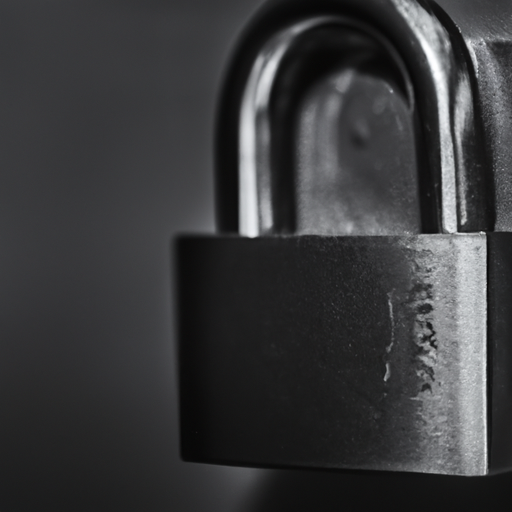If you’re a creative individual, whether you’re an artist, writer, musician, or filmmaker, understanding copyright law is crucial in safeguarding your creative works. Copyright law plays a pivotal role in protecting your original creations from being used, copied, or distributed without your permission. By having a clear understanding of copyright, you can ensure that your hard work remains secure and that you are able to reap the benefits of your own creativity. In this article, we will explore the fundamentals of copyright law and provide you with valuable insights on how to protect your creative works effectively.
Understanding Copyright Law
What is Copyright Law?
Copyright law is a legal framework that grants exclusive rights to creators and authors over their original works. These works can include literary, artistic, musical, dramatic, and audiovisual creations, among others. Copyright law provides creators with the ability to control the use and distribution of their works and ensures that they receive recognition and financial compensation for their creativity.
Purpose of Copyright Law
The primary purpose of copyright law is to encourage creativity and innovation by granting creators the exclusive right to reproduce, distribute, and publicly perform their works. Copyright law aims to strike a balance between the public’s access to creative content and the rights of authors and creators. By protecting their copyrights, creators are incentivized to continue producing new works, which benefits society as a whole.
History of Copyright Law
Copyright law has a rich history that can be traced back to ancient civilizations. The concept of granting exclusive rights to creators can be seen in the early days of the printing press when governments began issuing “printing privileges” to control the dissemination of books. The first statutory copyright law was enacted in England in the early 18th century. Since then, copyright law has evolved significantly to keep up with technological advancements and globalization.
Why is Copyright Law Important?
Copyright law plays a pivotal role in our society for several reasons. Firstly, it protects the economic interests of creators by allowing them to profit from their work and make a living from their creativity. Without copyright protection, it would be challenging for artists, writers, musicians, and other creators to sustain themselves financially.
Furthermore, copyright law helps preserve cultural heritage by ensuring that traditional works, folklore, and indigenous knowledge are protected from unauthorized use or exploitation, safeguarding the diversity and uniqueness of different cultural traditions.
Additionally, copyright law supports the creative industries, such as publishing, music, film, and software development. These industries contribute to economic growth and provide employment opportunities for countless individuals worldwide. Strong copyright protection encourages investment in these industries, leading to the creation of more diverse and high-quality works.
Lastly, copyright law fosters the concept of fair use and encourages the sharing and transformation of creative works. Fair use allows for limited and transformative use of copyrighted materials without seeking permission from the copyright holder. This promotes innovation, creativity, and the exchange of ideas.
International Copyright Law
Copyright law is not limited to individual countries; it extends to an international level as well. International treaties and agreements play a crucial role in harmonizing copyright laws across different countries and ensuring that creators’ rights are protected globally.
The Berne Convention for the Protection of Literary and Artistic Works is one of the most significant international treaties governing copyright law. It establishes minimum standards of protection and provides automatic copyright protection for works created by nationals of any member country.
The World Intellectual Property Organization (WIPO) Copyright Treaty and the WIPO Performances and Phonograms Treaty are other important international agreements that address copyright protection in the digital era. These treaties aim to adapt copyright law to the challenges posed by new technologies and the internet.
Types of Creative Works Covered by Copyright Law
Copyright law covers a wide range of creative works. Some of the major categories of works protected by copyright include:
- Literary Works: Books, novels, poems, articles, and other written works are protected by copyright law. This includes both fiction and non-fiction works.
- Artistic Works: Paintings, sculptures, photographs, drawings, and other visual arts are protected.
- Musical Works: Compositions, songs, melodies, and musical arrangements are eligible for copyright protection.
- Dramatic Works: Plays, scripts, screenplays, and other theatrical works fall under copyright protection.
- Audiovisual Works: Movies, television shows, documentaries, and other audiovisual content are protected by copyright.
- Architectural Works: Original building designs and their architectural plans are eligible for copyright protection.
- Software and Digital Works: Computer programs, websites, mobile applications, and digital content fall under copyright protection.
How Copyright Protection Works
Copyright protection is automatic and comes into effect as soon as a creative work is fixed in a tangible form. Unlike other forms of intellectual property like patents or trademarks, copyright registration is not required for protection. However, registering a work with the copyright office provides additional benefits, such as the ability to file infringement lawsuits and claim statutory damages.
To qualify for copyright protection, a work must be original and demonstrate a sufficient degree of creativity. The originality requirement means that the work must be independently created and not merely a copy of someone else’s work. This is determined by the expression of ideas rather than the ideas themselves.
Copyright grants creators exclusive rights, including the right to reproduce, distribute, and publicly perform their works. This means that others cannot use or profit from the work without permission from the copyright holder. However, there are limitations to these exclusive rights, such as fair use, which allows for limited and transformative use of copyrighted materials without seeking permission.
Duration of Copyright Protection
The duration of copyright protection varies depending on various factors, such as the type of work and the laws of the country where the copyright is claimed. In general, copyright protection lasts for the lifetime of the creator plus a certain number of years after their death. For works made for hire or anonymous works, the duration of protection is typically a fixed number of years from the date of creation or publication.
Copyright protection can also be extended through renewal or termination rights in certain cases. Renewal rights allow creators or their heirs to extend the duration of copyright protection, usually for an additional term. Termination rights provide creators with the ability to reclaim their rights and terminate any agreements or licenses after a certain period of time.
Rights of Copyright Holders
Copyright holders enjoy several exclusive rights over their works. These rights include the right to reproduce the work, distribute copies, publicly display or perform the work, and create derivative works based on the original. Copyright holders can grant licenses to others, allowing them to use the work within the limits set by the license. They also have the right to enforce their copyrights and take legal action against anyone who infringes upon their rights.
Limitations and Exceptions to Copyright Law
While copyright grants creators exclusive rights, there are limitations and exceptions to these rights. One such limitation is the doctrine of fair use, which allows for the use of copyrighted materials without seeking permission in certain circumstances. Fair use typically applies to purposes such as criticism, comment, news reporting, teaching, scholarship, and research.
Educational and library exceptions also exist, allowing for the use of copyrighted materials in educational settings and for non-profit purposes. These exceptions help promote the advancement of education and access to knowledge while still respecting the rights of copyright holders.
Parody, satire, and commentary are also recognized as forms of transformative use. These forms of expression often reference or borrow elements from copyrighted works for the purpose of social commentary or artistic expression.
Finally, works that have entered the public domain are not protected by copyright and can be freely used by anyone. Public domain works are typically those whose copyright has expired, works created by the government, or works that the creator has intentionally dedicated to the public domain.
Understanding copyright law is essential for creators and consumers alike. By respecting copyright and understanding its purpose and limitations, we can ensure a thriving creative ecosystem that benefits all stakeholders.

